Last Updated on September 26, 2022
What is a parapet wall?
A parapet wall is a structure that helps to protect the edge of a roof or balcony. They are commonly found in construction and civil engineering, and there are many different types that can be used depending on the project. In this blog post, we will discuss the different types of parapet walls and how they are used in construction and civil engineering. We will also provide some tips on how to choose the right type of parapet wall for your project.
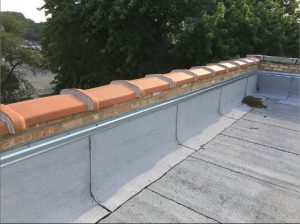
Parapet walls are an important part of a building’s design, serving both a functional and aesthetic purpose. It is important to select the right type of parapet wall for your project, taking into account the style and shape of the building as well as its intended use. By understanding the different types of parapet walls and their benefits, you can make sure that your building has the perfect finishing touch.
Types of Parapet Walls by Design Style
1. Embattled Parapet Walls
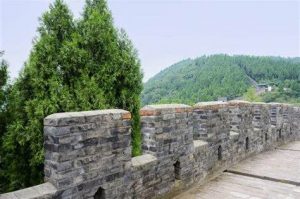
Embattled parapet walls are a type of wall that is built with battlements, or crenellations, on top. This type of wall was first used in medieval times as a way to protect against attackers. The battlements provided cover for defenders, while the gaps between the crenellations allowed them to fire at the enemy. Today, embattled parapet walls are often used for decorative purposes. However, they can also be used to provide some level of protection against the elements. For example, many homes in hurricane-prone areas have embattled parapet walls to help prevent wind and water damage.
2. Plain Parapet Wall
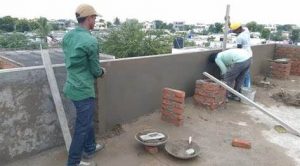
Plain parapet walls are a type of wall that is commonly used in construction. They are made from a variety of materials, including brick, concrete, stone, and wood. Plain parapet walls are typically taller than other types of walls, and they may be used to create privacy or to block unwanted views. In addition, plain parapet walls can be used to provide support for a roof or other structure. Plain parapet walls are usually easy to construct, and they can be adapted to fit a variety of needs.
3. Paneled Parapet Walls
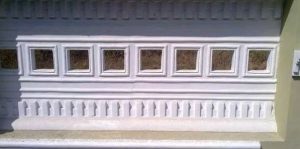
Paneled parapet walls are often used to provide a means of weather protection and are commonly found on commercial buildings. They are typically made from precast concrete, steel, or aluminum panels that are attached to the parapet wall. Panels can be flat or curved, and they may be sealed with an elastomeric sealant to provide additional weatherproofing. Panels are available in a variety of colors and can be textured or smooth. Paneled parapet walls can be an attractive feature of a building, and they can also provide added durability and protection against the elements.
4. Perforated Parapet Wall

Perforated parapet walls are an effective way to provide drainage for a roof. The holes in the wall allow water to drain away from the roof, preventing it from pooling or collecting on the surface. Perforated parapet walls are also effective at deflecting wind, helping to keep the roof from being damaged by strong gusts of wind. In addition, perforated parapet walls can help to reduce noise levels, making them ideal for buildings in areas with high levels of traffic or noise pollution. While perforated parapet walls have many benefits, they should be designed and installed by a professional to ensure that they are effective and safe.
Types of Parapet Walls by Shape
1. Flat Parapet Wall
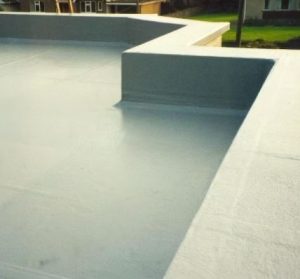
Flat parapet walls are a type of wall that is flat on top. They are often used to create a barrier between two areas, such as a roof and the edge of a building. Flat parapet walls can be made from a variety of materials, including concrete, stone, or metal. While they are typically found on commercial buildings, they can also be used on residential properties. Flat parapet walls are an effective way to add safety and security to a property. In addition, they can also improve the appearance of a building.
2. Sloped Parapet Wall

Sloped parapet walls are a common feature on many buildings, and they serve an important purpose. By sloping the wall surface, water is diverted away from the building, preventing it from becoming soaked and damaging the structure. In addition, the slope of the wall helps to shed snow and ice, preventing them from accumulating and causing a hazard. Sloped parapet walls are typically made of concrete or stone, and they can be decorated with brick or other materials to match the style of the building. When properly maintained, a sloped parapet wall can help to protect a building from the elements for many years.
3. Curved Parapet Wall
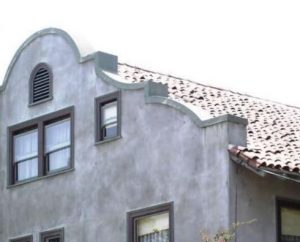
Curved parapet walls are a type of wall that is built with a curve, rather than a straight edge. These types of walls are often used in construction projects where it is necessary to create a wall that is both strong and aesthetically pleasing. Curved parapet walls are created by first constructing a straight wall, and then adding a curve to the top of the wall. The curve can be created using a variety of methods, but the most common method is to use a cantilever beam. This type of beam allows the wall to be curved without compromising its strength or stability. Curved parapet walls are an excellent solution for many construction projects, and they can add both strength and beauty to any structure.
4. Stepped Parapet Walls
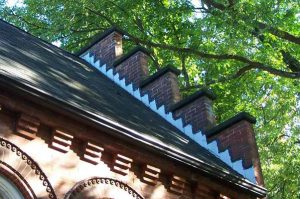
Stepped parapet walls are a type of wall that is commonly used on buildings. They are made up of a series of steps that increase in height from the bottom to the top of the wall. Stepped parapet walls are often used on taller buildings because they help to reduce the amount of wind that can blow against the side of the building. This can make the building more stable in high winds, and it can also help to reduce noise levels. Stepped parapet walls are also usually thinner than other types of walls, which can save space and money.
Purposes of Parapet Walls
1. Safety
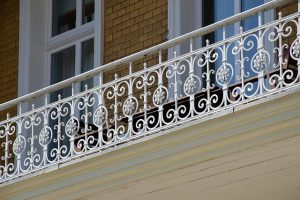
The primary purpose of a parapet wall is to provide safety. By extending the height of the wall, it serves as a barrier against falling or sliding off of the edge. In addition, parapet walls can also provide some level of protection against wind and weather. For instance, by breaking up the wind flow, a parapet wall can help to reduce the wind load on the structure. As a result, parapet walls serve an important function in protecting both people and property.
2. Privacy
Parapet walls are a great way to create privacy in your outdoor space. By blocking the line of sight from adjacent properties, parapet walls can ensure that your backyard is your own private oasis. In addition, parapet walls can also help to reduce noise levels, making it easier to enjoy time outdoors without being disturbed by the sounds of traffic or neighboring yards. If you’re looking for a way to create more privacy in your backyard, a parapet wall may be the perfect solution.
3. Aesthetic Value
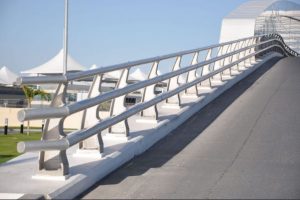
In addition to providing safety and security, parapet walls can also enhance the aesthetic appeal of a property. Parapet walls come in a variety of styles, including solid masonry walls and wrought iron rails. A well-designed parapet wall can complement the architectural style of a home or building and create an inviting outdoor space. For example, a parapet wall with a decorative railing can add charm to a Victorian-style home, while a stone parapet wall can give a rustic feel to a country cottage. Whether you are looking to add curb appeal to your home or create an enjoyable outdoor living space, a parapet wall may be the perfect solution.
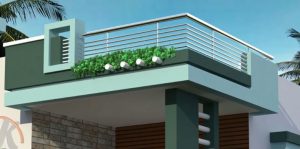
4. Sound Insulation
Sound is one of the most important considerations in building design, and the choice of building materials can have a significant impact on the amount of sound that is transmitted through a structure. One way to improve the sound insulation of a building is to use a parapet wall. Parapet walls are typically made of concrete, brick, or stone, and they are designed to extend above the roofline. By extending the height of the wall, sound waves are forced to travel a longer distance, and more of the energy is dissipated before it reaches the interior of the building. As a result, parapet walls can provide an effective barrier against noise pollution.
5. Fire-resistance
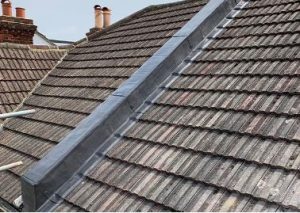
Fire resistance is an important quality for any type of building material, but it is especially crucial for parapet walls. Parapet walls are often the last line of defense against fire, and if they are not fire resistant, the entire building may be at risk.There are several ways to ensure that a parapet wall is fire resistant. First, the wall can be made of fire-resistant materials such as brick or stone. Second, the wall can be coated with a fire-resistant sealant. Third, the wall can be equipped with a sprinkler system. Any or all of these measures can help to ensure that a parapet wall is able to withstand the heat of a fire.
6. Dust Prevention
Dust particles suspended in the air can be harmful to human health and are a nuisance when they accumulate on surfaces. In addition, dust can contribute to the deterioration of building materials and finishes. To reduce the amount of dust in the air, it is important to control its source. One way to do this is to prevent dust from entering the building through the parapet wall. By sealing cracks and openings in the wall, you can help to keep dust out of the air and improve indoor air quality.
Height of Parapet Walls
The height of parapet walls is an important factor to consider when designing a building. The wall height impacts the wind loads on the structure, as well as the amount of privacy and security the occupants will have. In addition, the height of the parapet wall will affect how visible the building is from adjacent properties and roads. While there are no hard and fast rules for determining the ideal height of a parapet wall, it is important to consider all of these factors during the design process. Ultimately, the decision comes down to balancing all of these concerns to create a safe and functional building that meets the needs of its occupants.
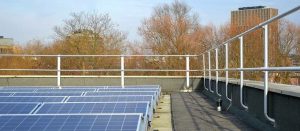
Primary purpose of parapet walls is to provide a barrier to weather and potential falling objects. For this reason, the height of the parapet wall is an important consideration in many building projects. The minimum standard height and thickness of parapet walls are 3 feet and 9 inches respectively. However, in most cases, the minimum height applied for a parapet wall is four feet. The height may need to be increased depending on the specific circumstances of the project. For example, if the building is located in a high-wind area, the parapet wall may need to be taller to provide adequate protection.
The height of the parapet wall is also a factor in fire safety. In general, the taller the parapet wall, the greater the level of protection from fire. As such, building code may require a taller parapet wall in certain situations. When designing a building, it is important to consider all of these factors to ensure that the parapet wall is adequate for the intended purpose.
Choosing the Right Type of Parapet Wall for Your Project
When choosing a parapet wall for your project, you will need to consider the following factors:
-The type of construction project
-The location of the project
-The budget for the project
-The design of the building
If you are unsure of which type of parapet wall to choose, you can always consult with a professional engineer or contractor. They will be able to help you select the right type of parapet wall for your project.

When choosing a parapet wall for your project, it is important to consider the type of material that will best suit your needs. Common materials used for parapet walls include wood, concrete, stone, and metal. Each type of material has its own advantages and disadvantages.
For example, concrete is very durable but can be difficult to install. Metal is also durable but may not provide the same level of privacy as other materials. Wood is a popular choice for parapet walls because it is relatively easy to work with and can be stained or painted to match the surrounding area. Stone is another popular choice because it is very durable and provides a natural look. Regardless of the type of material you choose, it is important to make sure that the wall is properly installed to ensure that it will last for years to come.
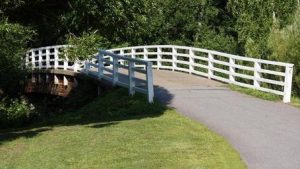
In other words, there are a few things to keep in mind. First, you will need to consider the purpose of the wall. If you are looking for a decorative element, then you might want to choose a taller parapet wall. However, if you are looking for a functional element that will provide privacy or protection from the elements, then a shorter parapet wall might be more appropriate.
Second, you will need to consider the climate in which the wall will be located. If you live in an area with high winds, then you will need to choose a heavier type of material, such as concrete or stone.
Third, you will need to consider the budget for your project. Parapet walls can range in price from a few hundred dollars to several thousand dollars, so it is important to set a realistic budget before beginning your project. By keeping these factors in mind, you can be sure to choose the right type of parapet wall for your needs.
Conclusion
Parapet walls are an important part of construction and civil engineering. They are used to protect the edge of a roof or balcony, and there are many different types that can be used depending on the project. In this blog post, we have discussed the different types of parapet walls and how they are used in construction and civil engineering. We have also provided some tips on how to choose the right type of parapet wall for your project.
Parapet walls have been used in construction for centuries, and continue to be a popular choice today. When selecting the right type of parapet wall for your project, it is important to consider both the design style and shape of the wall, as well as its intended purpose. By understanding the different types of parapet walls available and their associated benefits and drawbacks, you can make an informed decision about which type is best suited for your specific needs.

